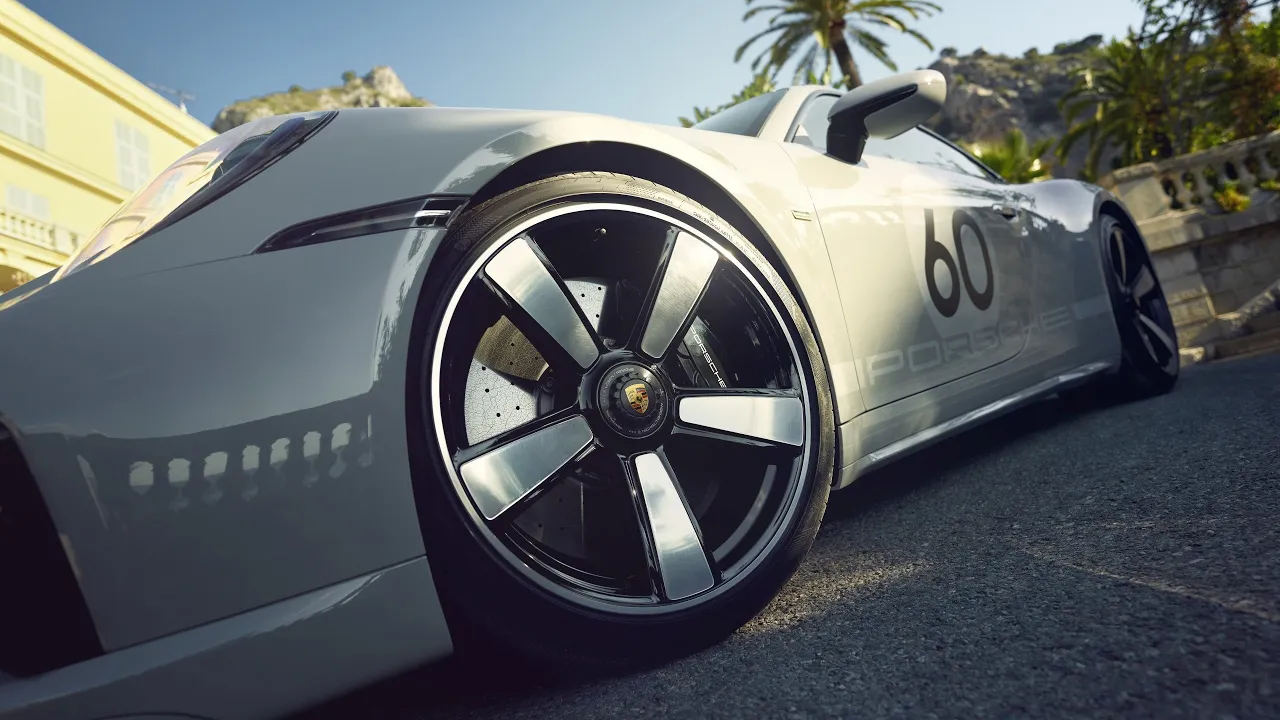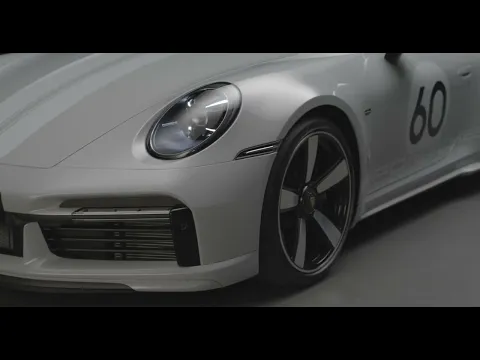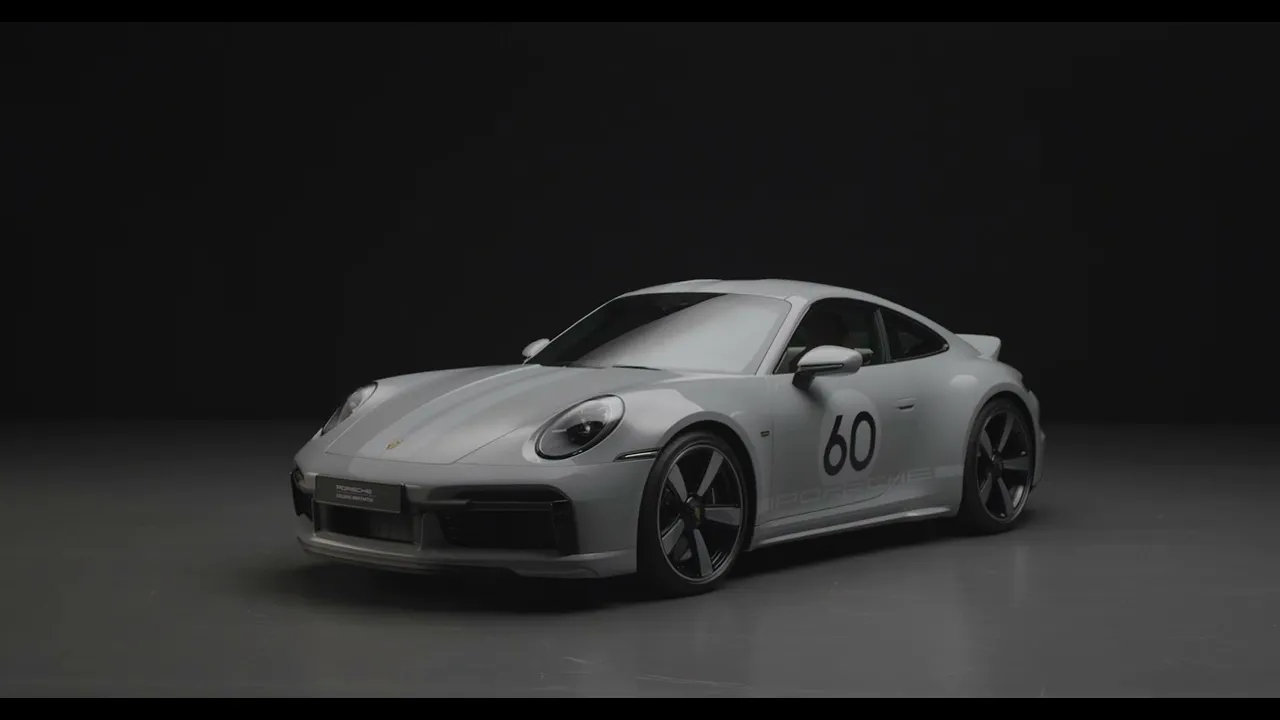The new Porsche 911 Sport Classic is the second of four collector’s items that Porsche has presented from its Heritage Design strategy.
A total of 1,250 examples of the limited-edition model by Porsche Exclusive Manufaktur will revive the style of the 1960s and early 1970s. Like its immediate predecessor, the 997-based 911 Sport Classic presented in 2009, the appearance of this model is inspired by the original 911 (1964 – 1973) and the 1972 911 Carrera RS 2.7.1

“The Heritage Design models represent the most emotionally driven concepts of the Porsche product strategy,” says Alexander Fabig,

Vice President Individualization and Classic. “This unique approach sees the Style Porsche design department working with Porsche Exclusive Manufaktur to reinterpret iconic 911 models and equipment from the 1950s through to the 1980s and to revive design features from those decades.” Porsche is launching four limited-edition models over an extended period. The first of these was presented in 2020: the 911 Targa 4S Heritage Design Edition with design elements from the 1950s and 1960s.

Porsche Design has also created a high-quality chronograph exclusively available to drivers who purchase the collector’s edition vehicle. The watch seamlessly picks up on numerous details from the new 911 Sport Classic design. As part of the Heritage Design Classic package, selected interior elements of the new 911 Sport Classic will also be available for most current 911 models.

The wide-body – otherwise reserved for the 911 Turbo models – a fixed rear spoiler in the style of the legendary ‘ducktail’ Carrera RS 2.7 and the double-bubble roof underscore the distinctiveness of the new 911 Sport Classic.

As with the first 997-generation 911 Sport Classic launched in 2009, the designers were inspired by the Fashion Grey paintwork of the early Porsche 356 when choosing the exclusive paint finish for the new limited-edition model. “The new 911 Sport Classic is the first vehicle to feature Sport Grey Metallic paintwork,” says Michael Mauer, Vice President Style Porsche. “Grey is never boring, quite often a statement and always cool.” As an alternative to the exclusive Sport Grey Metallic finish, the new 911 Sport Classic is also available in solid Black, Agate Grey Metallic, Gentian Blue Metallic or Paint to Sample.3 Twin stripes painted on the bonnet, roof and rear spoiler in light Sports Grey emphasise the car’s sporty design.

In the interior, the iconic Pepita pattern can be found on the door panels and seat centres, while two-tone, semi-aniline leather upholstery in Black/Classic Cognac provides an elegant contrast with the exterior colour.
550 PS for the most powerful manual 911 yet
The suspension, based on that of the 911 Turbo and 911 GTS models, meets high performance requirements: thanks to the standard Porsche Active Suspension Management (PASM), its shock absorbers respond to dynamic changes at lightning speed. PASM is combined as standard with the sports suspension, which features a 10-millimetre-lower ride height.

Info
- Delivery will be available from European Porsche Centres from July 2022 onwards and additional markets will follow.
- Expected to be available from September 2022; further information will made available online in the Car Configurator at Porsche.com 3 Expected to be available from October 2022 and without contrasting painted twin stripes.
Design, technology and plenty of history
A sports car as extraordinary as the 911 Sport Classic is worth more than a thousand words. But that doesn’t mean it shouldn’t be talked about anyway: a conversation with the car’s designers – Grant Larson, Daniela Miloševic and Chris Holzinger – as well as Boris Apenbrink, the then Project Manager of the first, 997-generation 911 Sport Classic and the present-day Director of Porsche Exclusive Manufaktur Vehicles.

Let’s begin with a general question: how did the Sport Classic come about?
Apenbrink: “Well, first of all it’s important to say that the entire thing was not really intentional. In 2009, the Sport Classic saw us reviving complex vehicle projects at Porsche Exclusive Manufaktur, which was still called Porsche Exclusive back then. Right away we said it was something that we wanted to do more often in the future. Actually, everyone was convinced. It had always been the case with all the Exclusive models until this point – every vehicle we worked on was a one-off. Because that was the strategy: there was one and only ever one. The next time we would come up with a new theme. But customers had kept asking: ‘When are you going to do a Sport Classic again?’”

Larson: Although only 250 examples of the first Sport Classic were built, it still has an incredible presence today and remains in the minds of a huge number of people – not just on Instagram or Facebook – but also at Porsche meetings and so on.” Apenbrink: “Yes, it’s the kind of vehicle where you keep hearing that it turns heads.”

The name ‘Sport Classic’ – what is it all about? Is there a story behind it or are we not allowed to share it?
Apenbrink: “That was actually a working title. Back then, we had worked out three concepts for the first limited series in a workshop – one of them was a ‘Classic Coupé’. The exact wording was ‘a classic coupé with the most important design references in Porsche’s history’. When we said ‘classic’, we meant a pure form of the Porsche sports car. But adopting the working title would have been too easy, so we combed through the history of Porsche vehicle names. We stuck with SC, which was then short for Super Carrera, because it was a perfect match for the vehicle’s features. The shorter the name on the rear lid, the better. And so we dreamed of using 911 SC. In the end, however, the naming rights to ‘SC’ had already been taken and our vehicle was not a 1:1 successor to the 911 Porsche SC at the time. So we kept searching and went from Super Carrera to Sport Classic. A classic sports car with a manual transmission, rearwheel drive, a performance-enhanced engine and typical Gran Turismo equipment – a Sport Classic indeed.”

When deciding on a new Sport Classic, were there any difficulties or any particular hurdles that had to be overcome? Or was it simply that everyone was excited and it just took off?
Larson: “I wouldn’t call it a difficulty – but the biggest challenge was definitely the rear wings. We really wanted the wide haunches but without the air intake. But there weren’t any tools for that, so we had to do a bit of tinkering with an experimental tool. Are we allowed to say that?”

Apenbrink: (laughing) “Yes, we can say that. As Grant just mentioned, we really wanted that sculptural shape, that wide body with nice curves. But we couldn’t run up millions in development costs, we needed good ideas instead. And that’s when we had the idea of further developing and using the pre-production tooling, for the actual production run as a limited-edition tool. It was an unusual approach that made the impossible possible. But in general it could be said that none of these cars were simply a home run. There was a lot to do before the vehicles could appear at motor shows and a lot of decision-makers needed to be convinced. Limited-edition vehicles always polarise opinion somehow – and very deliberately so. They are often not self-explanatory, either. That’s exactly what makes them so appealing. It takes a lot of passion and persuasion to take these vehicles from the concept phase to the decision-making and development phases – and ultimately to the end goal. It takes a small, committed team that believes in it, fights for it and won’t be dissuaded.”

And yet here it is now, the new 911 Sport Classic, with a ducktail and all the trimmings. Are there other elements that have their own development history or is the rear the most distinctive?
Larson: “In addition to the ducktail, we also included the design of the Fuchsfelge®. There have always been different interpretations of this in the past, but with the Sport Classic we have come closer to the original than ever before. The recesses in the roof are also unusual. They prevented the original from 2009 from being sold in the US at the time.”

Apenbrink: “Oh yes, good point. Let’s talk about the roof. That wasn’t available at Porsche before the first Sport Classic.”

Larson: “We didn’t put the 997 Sport Classic on the market in the US – that was the reason for the small number of 250 units back then. Because a roof with recesses would have required specific tests to be conducted. They are required by law in the US. This was simply too expensive for the small number of units and the desired level of profitability. That’s why the 997 Sport Classic is also one of the most coveted collector cars in the US.”

Apenbrink: “There are now a few people who have managed to import a 997 Sport Classic and who proudly present them at the various automobile shows and Concours d’Elegance events. But the double-bubble of the new 911 Sport Classic is now regularly available in the US for the first time – that’s a giant step forward.”

Miloševic: “And yet another giant step: the first Sport Classic and now the new one both have a stripe design that matches the double bubbles – very subtle, two-tone. The 997 had a relatively light grey colour with darker stripes. Now it’s the opposite: the exterior colour is darker and more modern while the stripes are a bit lighter. But – and this is the point – they are no longer attached as decals to the vehicle like last time, but are painted on instead. That’s a huge leap over its predecessor. When you run your fingers over the two stripes, you notice the beautiful, smooth surface right away. This has been produced using a much more complex process and is very elegant.”

Let’s talk about the interior. There are also some special features here – the Paldao interior package, for example. Is there more to it than just pure visuals?
Holzinger: “From 1964 to 1967 we offered mahogany veneer in a natural matt colour for the instrument panel cover and the steering wheel rim in the Porsche models. That was the historic model. We wanted natural materials. In addition to leather, wood is also used in the vehicle interiors as a high-quality and renewable natural product. The components of the interior are enhanced by the processing of high-quality materials.”

Apenbrink: “Back then, we built the millionth 911 as a nod to Ferry Porsche’s ‘company car’, Irish Green on the outside, with a Pepita pattern on the seats and classic wood on the inside. Customers still associate that with the early 911 models today. Wood is very rarely chosen for modern 911 cars, and much more often for four-door models such as the Macan, since customers associate these much more closely with vehicles from other manufacturers. It’s normal for those, but rather rare for the 911. For the first time, Paldao has – at least in the way I perceive it – a certain coolness for our customers. When they look into the interior they say, ‘Okay, now for the first time I will seriously consider speccing a 911 with a wood interior.’”

Holzinger: “That’s also because it’s an open-pore trim. The open-pore design gives the entire thing a contemporary look with a natural feel that makes it modern. At the same time it is also a tribute to the 1960s.”

Speaking of tributes, the next keyword is Pepita. This was also retained for historical reasons, wasn’t it?
Holzinger: “Yes, that comes directly from Porsche’s history. Pepita was originally offered as an option in the final stages of the 356. But only very occasionally, on request. It was officially mentioned for the first time in 1965 in the equipment catalogue for the original 911.” Apenbrink: “Pepita is still one of the most sought-after patterns today when customers ask for special options that aren’t listed in the normal catalogue. This is because many people associate the fabric with Porsche.”

Let’s talk about the instrument cluster. As with the Targa, the rev counter is based on the one used in the 356. These parallels and the green colour – what’s the significance?
Larson: “The numbers were green in the 356 and the 911 until 1967. It stopped after that. The technology was simple back then. The instruments had an offset between the chrome ring or glass and the dial. The instruments were of course illuminated from the outside through this gap. The hands were treated with green phosphorus, like you see with those glow-in-the-dark toys.”

Apenbrink: “Or like the second hand of classic watches.”
Holzinger: “The technology at that time was simply not advanced enough to provide backlighting from your own light source so the phosphorus was used for afterglow.”

Apenbrink: “I remember sitting in a historic Porsche and thinking, ‘You can hardly see the hands’. But of course, if the phosphorus no longer works, then nothing glows anymore.”

Larson: “Even in the newer models, these green elements can often be found in their instruments. This has become a classic element, although phosphorus has not been used for a long time, of course.”
Apenbrink: “It’s also a good example of how technical innovation and tradition naturally merge.”
Thank you very much for the interview.










































































































